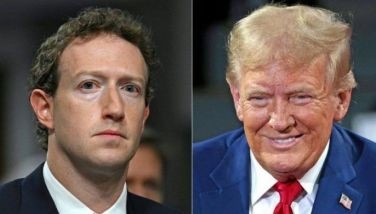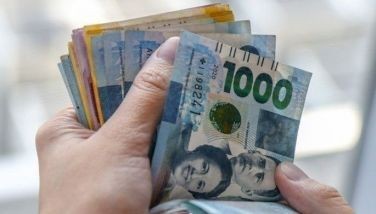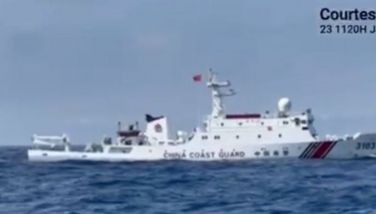Recent macroeconomic developments: the peso, local stocks, and US ‘quantitative easing’

We witnessed in the last week some macroeconomic directions that demonstrate how vulnerable we could be to what happens in the world beyond our borders. The changes do not alter the country’s economic fundamentals which remain essentially sound.
I refer to the huge net withdrawals of short-term capital from the country’s equity market which reversed the net capital inflows we were enjoying for more than a year before.
“Two immediate market impacts.†The depreciation of the peso from the neighborhood of 40 pesos per US dollar to 43 and the drastic movements of the stock price index of Philippine companies were indications of these macro developments. The depreciation of the peso is helpful to the fortunes of the export sector, but the high volatility of the stock market was unnerving to domestic investors.
The main negative effect of this development is in the stock market. The market index dropped from the June 10, 2013 level of 6,875 to 6,114 by June 14, a fall amounting to 12.4 percent. Marked volatility remains even as the local market index seeks a new rising value.
These changes reflected some market corrections but not all.
The peso depreciation restores some competitiveness to the export sector that has lost much due to earlier peso appreciation. In fact, a further weakening of the peso would improve that competitive edge and stimulate new investments in the export sector.
The recent run up to the stock market boom was too delirious and profit-taking was bound to lead to later downward corrections. However, the extent of withdrawals from the Philippine equity market made the index fall much harder. Philippine stock values will have to find their true values from the current levels after the drop in the market index.
“How to build domestic policy defenses.†Still, these developments remind us about the fragile nature of the current state of affairs despite improving economic fundamentals that has earned for the country an investment credit rating.
To build against these vulnerabilities is one major problem facing the country’s economic decision-makers. This requires additional reforms (not just the ones often touted in public). There is a need to reduce the destabilizing impact of short-term capital movements on the economy. It is now recognized even by the IMF that such measures to control the flow of short-term capital would help to shield the domestic economy. This was the main lesson of the Asian financial crisis of the 1990s.
Far more important in my view is the need to liberalize further the encouragement of foreign direct investments. Despite the rhetoric about the importance of foreign direct investments, President Aquino is not making a move to amend the constitutional restrictions on foreign direct investments.
This is folly. If the investment grade is to attract more FDIs, then the constitutional restrictions to foreign investments would be essential. Only dealing with the economic provisions is needed.
“International roots of the policy shifts.†The domestic economic changes that we observe are rooted in economic developments originating in the major economies, principally the US. Supplementary changes are the result of policy shifts also in Japan. The China factor becomes important if its domestic economy turns into the engine of its own growth. Europe is still heavily bogged down by the euro problem to be a major factor now.
There are three major variables in US economic policy-making at the macro-front: fiscal policy, monetary policy, and the exchange rate. Since the management of the US dollar is through the floating exchange rate market with all the major currencies, only two active policy fronts are critical: fiscal and monetary.
In recent years US macro policy-making has essentially bogged down to a political gridlock at the fiscal level. Nothing can be expected from the US fiscal front except a contractionary stance. That, however, could have led to further recession if the monetary sector did not come to the rescue.
The US central bank under Ben Bernanke has taken all the initiative in pushing for the sustenance of measures to stimulate the economy. The solution was through “quantitative easing (QE)†to replace the early fiscal stimulus that has ended.
Quantitative easing is a new term for the old solution: an expansionary monetary policy. The US central bank did this through massive buying of private bonds in the corporate sector, thus flushing the business sector with new money.
(In the past, the main bond operation of the central bank was through open market operations on government debt. The innovation of the present QE was in applying the same method on private corporate debt.)
By raising money supply, the measure raised credit use to stimulate aggregate spending in the economy, thereby fueling growth and recovery. New spending was the lifeblood of the recovery process. Because of the large impact of the US economy on the world, this policy on QE had also loosened money abroad.
One consequence of this policy of reducing interest rates was that some savings in the US had to look for higher returns elsewhere. The money went to places where the interest rate was higher.
“Yield fundamentals.†The improving macroeconomic position throughout this period which coincided with the coming in of the Aquino administration attracted quite a substantial amount of foreign funds because of higher yields. This was not unique to the Philippine market but throughout the regions whenever similar conditions prevailed.
Foreign investment in Philippine equities was one of the most attractive for foreign funds and this helped fuel the recent Philippine stock market boom. Moreover, Philippine interest rates also represented a margin that was comfortable for attracting funds into the country, including those funds that parked in Special Deposit Account (SDA) instruments of the Philippine central bank.
Foreign asset managers moved investibles from the low interest regions to those offering good rates of return, the Philippine market being one of them. This was one major effect of QE – a minor impact as far as US monetary developments for this large economy were concerned.
As long as QE continued, interest rates would be relatively unchanged from their low levels. Then, recently (last week), the Chairman of the US central bank, Ben Bernanke, announced that QE would be relaxed and he signalled that this would happen by the end of 2013.
This was the game-changing signal for the capital markets. It provided the incentive to rebalance investment positions and to expect that interest rates would rise again in the US, thus increasing their yield prospects there.
My email is: [email protected]. Visit this site for more information, feedback and commentary: http://econ.upd.edu.ph/gpsicat/
- Latest
- Trending
































